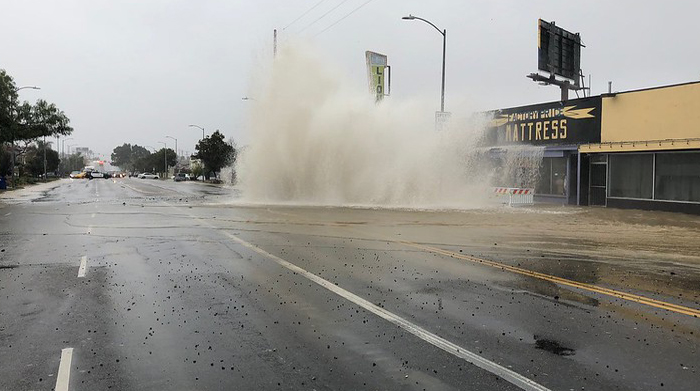Best Practice for Responding to Water Main Breaks

Image courtesy of L.A. Fire Department under Attribution-NoDerivs 2.0 Generic License, resized to 700 x 391 pixels.
Water main breaks are the bane of water utilities’ existence. Not only do these events interrupt water service for residential customers, but critical customers like hospitals and schools are often affected as well. Luckily, the water utility industry has gotten better over the years at predicting, preventing, and responding to water main breaks within their service territories.
Tips for Managing Water Main Breaks
Water utilities are taking various measures to reduce the impact of water main breaks. Some of the strategies implemented include:
- Regular maintenance and proactive inspection to identify potential issues before they turn into major breaks, allowing for timely repairs or replacements.
- Effective asset management processes to assess the condition of aging infrastructure and prioritize repairs and replacements based on risk. This enables water utilities to identify sections of water mains that are most prone to breaks and take preventive measures accordingly.
- Remote monitoring and sensors to continuously monitor water mains for any signs of distress. These real-time monitoring systems can detect leaks, pressure anomalies, or structural weaknesses, enabling utilities to address potential issues before they lead to breaks.
- Comprehensive leak detection programs to identify and repair smaller leaks before they escalate into larger breaks. This includes using acoustic sensors, infrared cameras, and other advanced technologies to detect and locate leaks more efficiently.
- The adoption of new and improved materials for water mains, such as corrosion-resistant pipes, ductile iron, and high -density polyethylene (HDPE) pipes. These materials are more durable and less prone to corrosion.
- Comprehensive emergency response plans that include fast response protocols, 24/7 customer service centers, and coordination with local authorities to enable the quick isolation and repair of breaks to minimize disruptions.
- Public awareness and education campaigns to encourage water conservation and responsible water usage, which helps reduce stress on the water infrastructure.
Overall, water utilities are combining proactive maintenance, advanced monitoring technologies, asset management practices, and public engagement to mitigate the impact of water main breaks. These efforts are crucial for ensuring reliable water supply, minimizing water service interruptions, and reducing the potential economic and environmental consequences of water main breaks.



